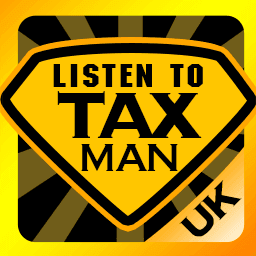What April 2022 tax changes should UK landlords know about?
*Please note the information in this article may be out of date
What key tax changes are being introduced for the 2022/23 tax year and how could they affect you and other landlords?
Tue, 05 Apr 2022Article by GoSimpleTax
April marks the start of the 2022/23 UK tax year, while also being the month when HMRC introduces some important tax changes.
These can affect landlords just as much as other taxpayers and in some cases they can have a significant impact on your tax bills. With prices rising sharply seemingly across the board, you should be aware of how much more tax you’ll have to pay as a landlord, so that you can better budget for the year ahead. The April 2022 tax changes could also affect income you receive from other sources.
National Insurance contributions
As widely reported when announced in the government’s October 2021 Budget, from 6 April 2022, National Insurance contributions (NICs) will increase by 1.25 percentage points (which is much higher than a 1.25% increase). The government says the additional tax revenue will be spent on the NHS and social care.
Rental income is not subject to NICs unless you’re a professional landlord running a property rental business (ie being a landlord is your main job, you rent out more than one property and buy new properties to rent out, etc). If you are a professional landlord running a property rental business, currently you must pay NICs if your earnings exceed the Class 2 and Class 4 NIC thresholds.
Obviously, if you’re not a professional landlord but you earn income from other sources upon which you currently pay NICs, for example, if you’re an employee, sole trader or member of an ordinary partnership, your NICs will increase by 1.25 percentage points. If you employ people, your share of their Class 1 NICs will also increase, while any Class 1A and 1B payments employers pay on employee expenses and benefits will also increase.
What about Income Tax?
Not much will change when it comes to Income Tax. The personal allowance (ie the amount upon which no Income Tax is payable) remains at £12,570 a year (ie £1,048 a month or £242 a week). Beyond this figure, in England, Wales and Northern Ireland, 20% Income Tax (ie the basic rate) is payable on taxable earnings between £12,571 and £50,270 a year, then 40% (the higher rate) on £50,271 to £150,000 and 45% on annual earnings over £150,000. The tax rates in Scotland are different, but the personal allowance is the same.
Other tax-related changes for landlords
Tax on dividend income will also increase by 1.25% from 6 April. If you earn any income from dividend payments, after your £2,000 annual allowance, if you’re a basic rate Income Tax payer you’ll pay 8.75% tax on dividend payments (7.5% was the previous percentage). If you’re a higher rate Income Tax payer, from 6 April you’ll pay 33.75% (up from 32.5%) and additional rate Income Tax payers will pay 39.35% (up from 38.1%) on their dividend income.
A reminder that Capital Gains Tax rules changed in October 2021 in a way that could benefit you if you choose to sell property this year. Previously, you would have had just 30 days to report any taxable gains made from the sale of property and pay the CGT you owed to HMRC, but you now have up to 60 days. The same amount of Capital Gains Tax is payable, it’s just that have twice as much time to report and pay tax on any taxable gains.
Making Tax Digital for landlords
From April 1 2022, landlords with a VAT-registered business with a taxable turnover below the VAT threshold of £85,000 will need to comply with Making Tax Digital for VAT requirements. These mean you must maintain digital records using MTD-compatible software and report figures online to HMRC each quarter. More information about Making Tax Digital for VAT is available from HMRC via government website gov.uk.
It’s still some way off, but all current Self Assessment taxpayers will need to comply with Making Tax Digital for Income Tax requirements when they are introduced. Beginning in April 2024, this will also require you to use MTD-compatible software to maintain digital records of your income and outgoings. You’ll need to send quarterly updates to HMRC online and submit an end-of-period statement and final declaration, so that your tax liability can be calculated. You’ll no longer need to complete a Self Assessment tax return once MTD for Income Tax Self Assessment is introduced.

 Our Favourite Tax App?
Our Favourite Tax App?
It's Simple
ListenToTaxman have teamed up with GoSimpleTax, the online self-assessment app to bring you, what is in our view, the easiest way of calculating and submitting your tax return we’ve seen so far. Key in your income and expenses into the app, and it will flag up any unclaimed allowances. Simple.
Once you’re comfortable with the information you’ve entered, simply submit via the app to HMRC. You’ll just need your Tax Reference Number - found on most tax correspondence. GoSimpleTax let you use their software free for 14 days. If you don’t think it’s right for you - don’t pay anything. If you do to choose to submit your tax information via the app, then at most of you will be charged £49 for their service.
